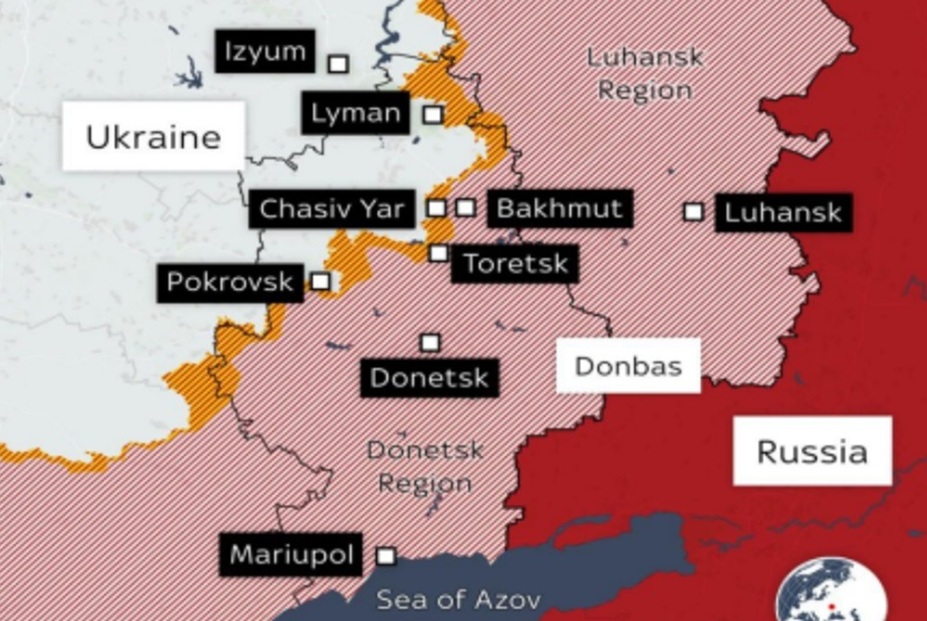In a powerful display of strategic cooperation, the United States Air Force’s (USAF) legendary B-1B Lancer is set to participate in an upcoming bilateral air exercise with the Indian Air Force (IAF). The US Navy and the Indian Navy conducted a joint maritime patrol and reconnaissance training exercise in the Indian Ocean, near Diego Garcia, last month to enhance interoperability and coordination. The 22nd edition of the India-US Military Cooperation Group (MCG) meeting concluded in Hawaii, USA, where senior military leaders from both sides met to enhance India-US interoperability and promote a free, open and secure Indo-Pacific region.
Wings Over the Indo-Pacific
India-US Military Synergy Deepens as P-8I, MH-60R, Apache, and C-17 Define a New Era of Interoperability. The skies and seas of the Indian Ocean echoed the growing strength of the India-US military partnership as a US Navy P-8A Poseidon and an Indian Navy P-8I aircraft conducted a week-long joint exercise near Diego Garcia from Oct. 22 to 28, 2025. The exercise was more than just a routine drill: it marked a significant step forward in deepening interoperability between two of the world’s most capable maritime powers.
Focused on anti-submarine warfare (ASW) and maritime domain awareness (MDA), the bilateral detachment demonstrated how seamlessly both navies could coordinate complex missions in the vast Indo-Pacific theatre. With maritime security becoming a cornerstone of the India-US strategic framework, this exercise reaffirmed the alignment of operational goals and technologies between New Delhi and Washington.
The P-8I and P-8A aircraft, both derived from Boeing’s maritime patrol lineage, served as an ideal platform for coordination. Their advanced sensors, radar systems, and real-time data-sharing capabilities symbolised how technology transfer and joint training are now central to the evolving defence relationship.
The synergy displayed at Diego Garcia builds on the momentum of previous engagements such as Tiger Triumph 2025, where the two nations experimented with integrating satellite-based systems, unmanned technologies, and joint command networks to enhance communication and situational awareness.
Added Focus on Indo-Pacific
Captain Rodney Erler, Commodore of the US Navy’s Commander Task Force 72, emphasised the strategic significance of such joint drills. “Our P-8A crews were proud to fly alongside our Indian partners,” he said. Maritime domain awareness is critical for identifying threats that could undermine regional stability. Working with allies and partners like India ensures a free and open Indo-Pacific.”
This “free and open Indo-Pacific” vision, shared by both democracies, has gradually evolved from a diplomatic slogan into a joint operational reality. Beyond Diego Garcia, it is increasingly supported by shared platforms and technologies, including Lockheed Martin’s Sikorsky MH-60R Seahawk helicopters, Boeing’s AH-64E Apache attack helicopters, and transport aircraft such as Lockheed Martin’s C-130J Super Hercules and Boeing’s C-17 Globemaster III.
These systems not only enhance individual capabilities but also enable interoperability during multinational missions, humanitarian operations, and maritime security patrols. Adding to this growing military convergence, two major defence deals currently in progress underscore the expanding technological and industrial partnership between India and the United States.
Aero Engines Manufacturing
The first involves the potential procurement and joint production of the General Dynamics Land Systems’ Stryker armoured fighting vehicle, which aims to bolster the Indian Army’s rapid mobility and battlefield survivability under the Make in India framework. This deal, if finalised, will not only enhance India’s land warfare capabilities but also deepen defence industrial cooperation through co-development and technology transfer.
The second landmark agreement is the GE Aerospace–HAL deal to manufacture the advanced F-414 jet engines in India for the indigenous Tejas Mk2 fighter aircraft. Less than two weeks later, on Nov. 7, 2025, GE Aerospace and HAL signed a deal for the supply of 113 F404-GE-IN20 engines, along with an associated support package, for the Tejas Mk1A fighter aircraft.
This agreement represents one of the most significant defence technology collaborations between the two nations, marking the first time an American company will transfer high-end jet engine technology to India, ushering in a new era of aerospace self-reliance and trust in bilateral defence ties.
As India and the United States expand defence cooperation under initiatives like the Initiative on Critical and Emerging Technologies (iCET) and logistics agreements that allow access to each other’s bases, the operational comfort between their forces continues to grow.
The Diego Garcia engagement is a clear reflection of how far the relationship has come: from cautious cooperation to genuine collaboration. Future joint efforts are expected to include undersea surveillance networks, drone-based reconnaissance, and coordinated operations in the Indo-Pacific’s strategic chokepoints. With China’s growing assertiveness in regional waters, such exercises underscore a shared resolve to maintain balance, stability, and transparency in maritime operations. For India and the US, the message from Diego Garcia was clear: interoperability is no longer an aspiration; it’s the new normal.
Conclusion
During a meeting between US Defence Secretary Pete Hegseth and his Indian counterpart Rajnath Singh in Kuala Lumpur. India and the US have signed a framework agreement to expand defence cooperation over the next 10 years. The agreement will enhance “coordination, information sharing and tech cooperation” and advance “regional stability and deterrence”, Hegseth said on X. It appears that the two countries are trying to close more strategic deals to tide over the tension created by US President Donald Trump by slapping 50% tariffs on India.
Title Image Courtesy: IANS
Disclaimer: The views and opinions expressed by the author do not necessarily reflect the views of the Government of India and the Defence Research and Studies






